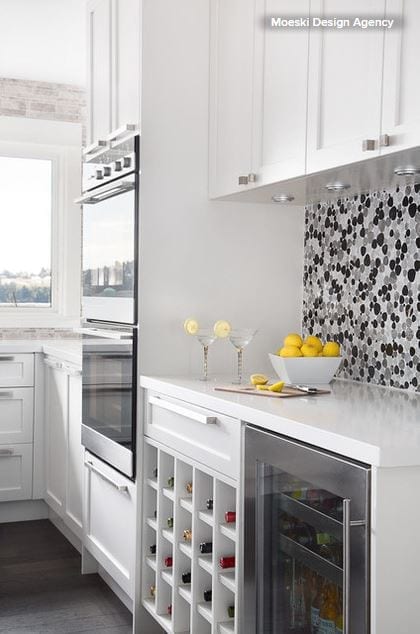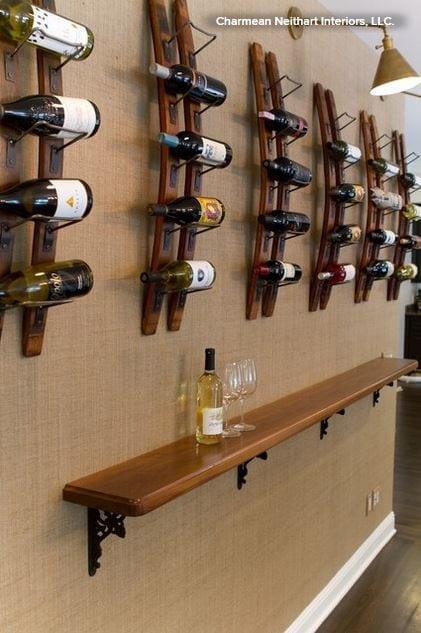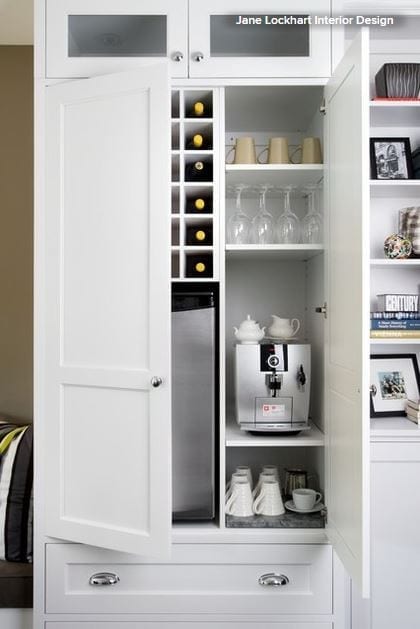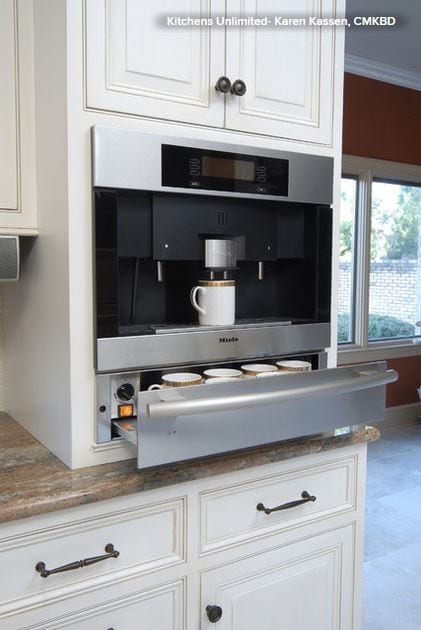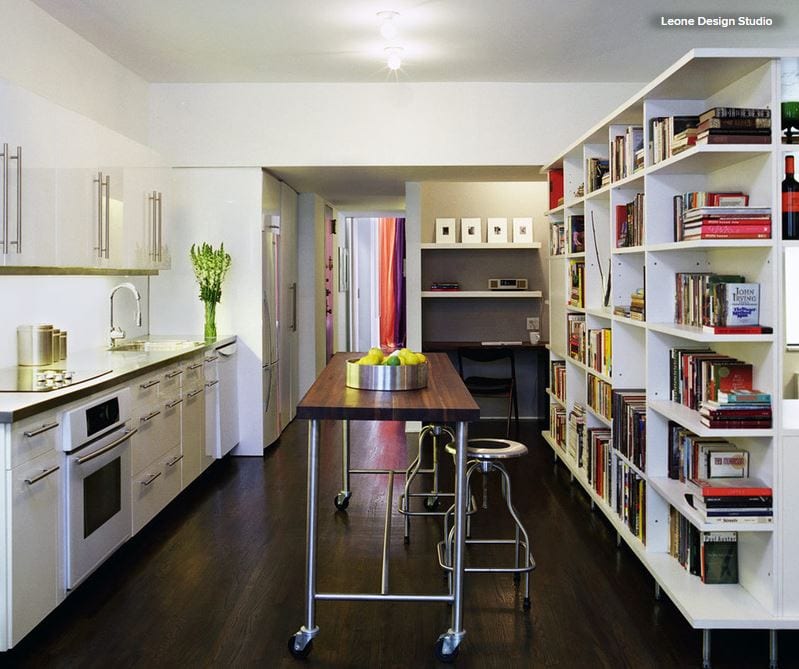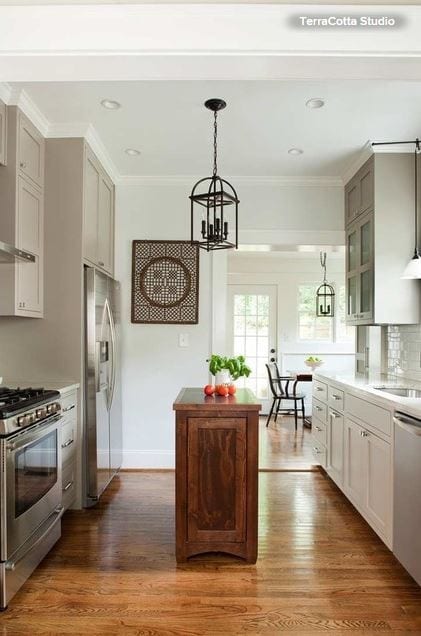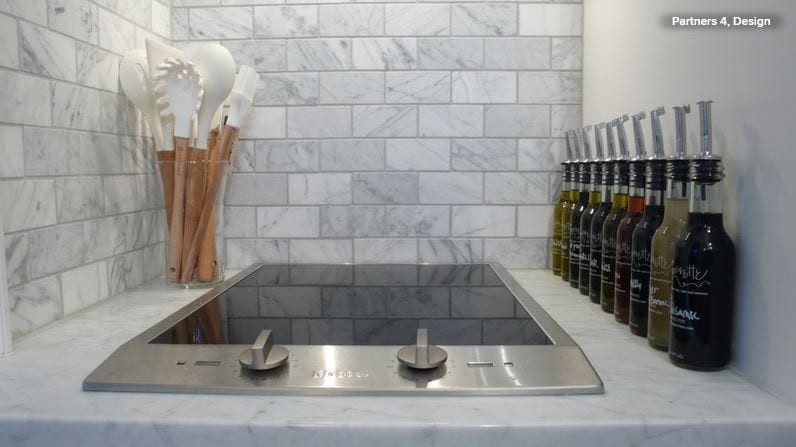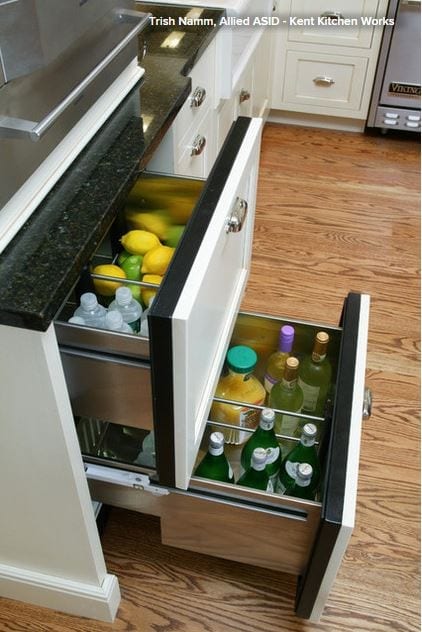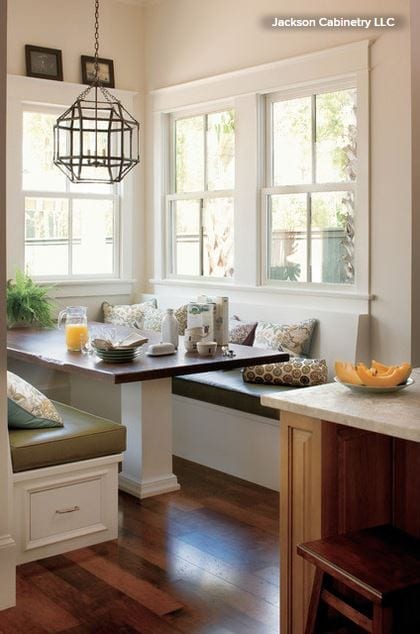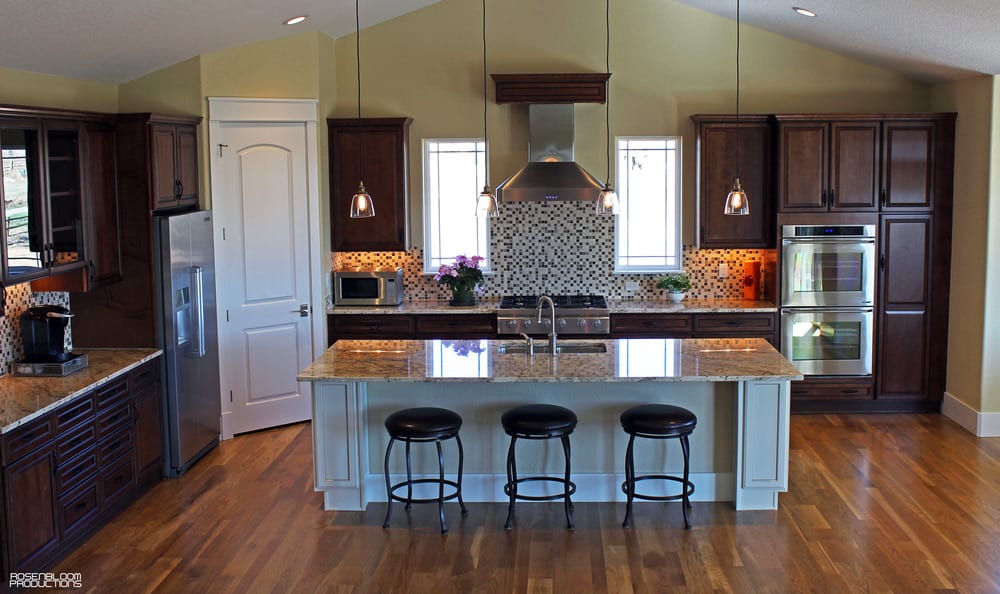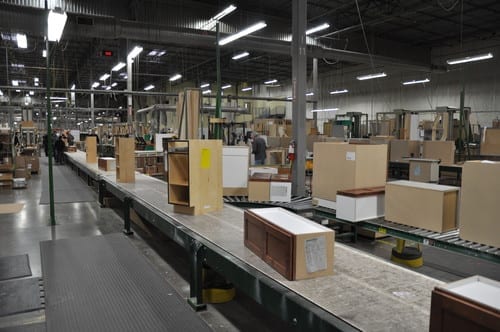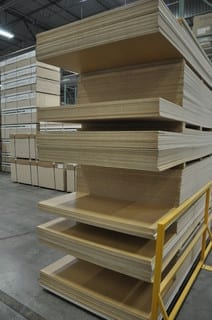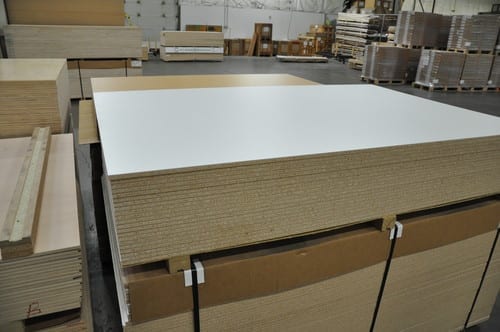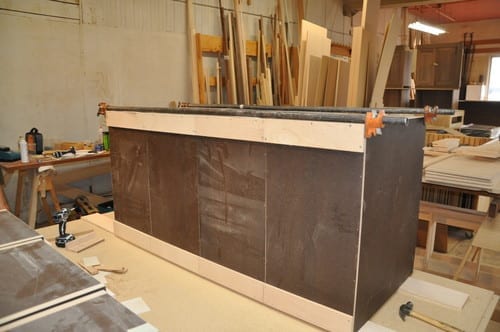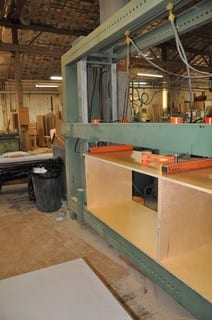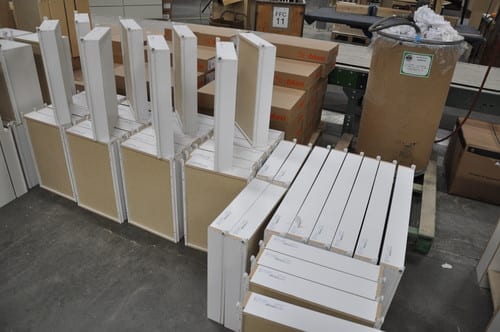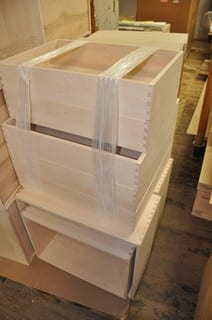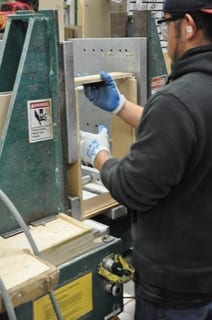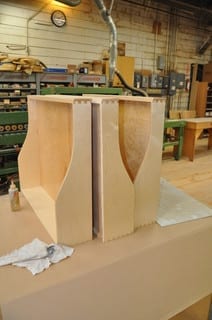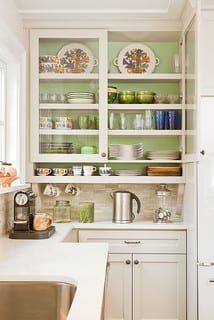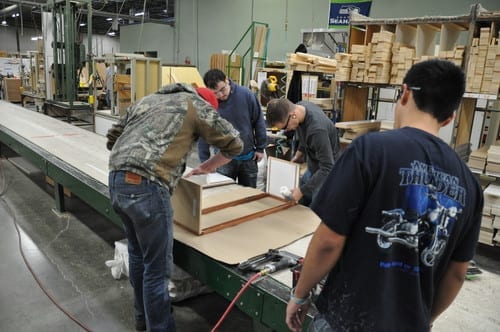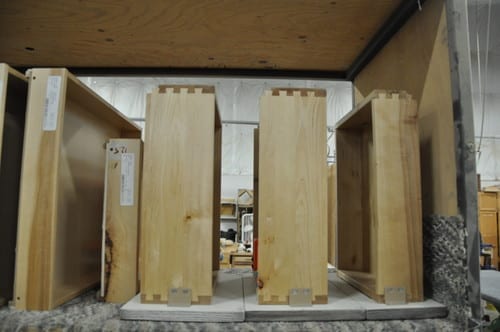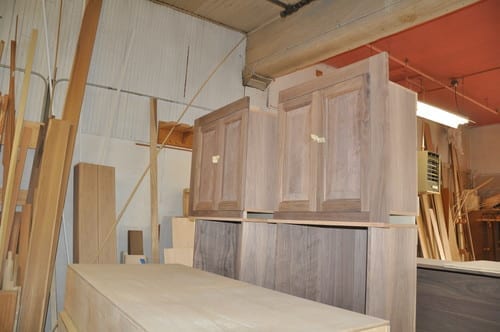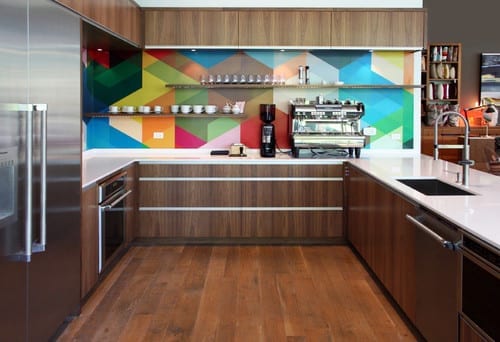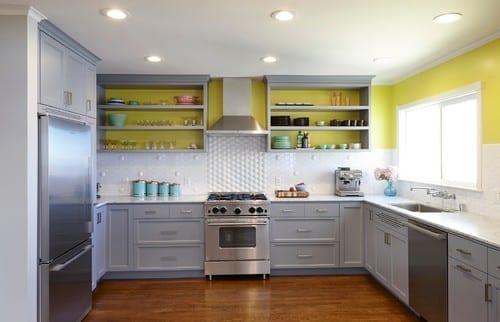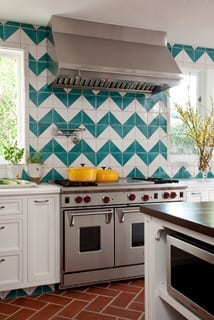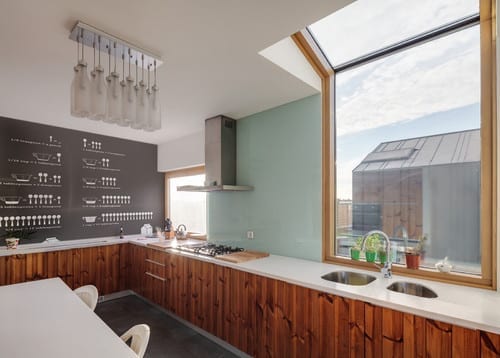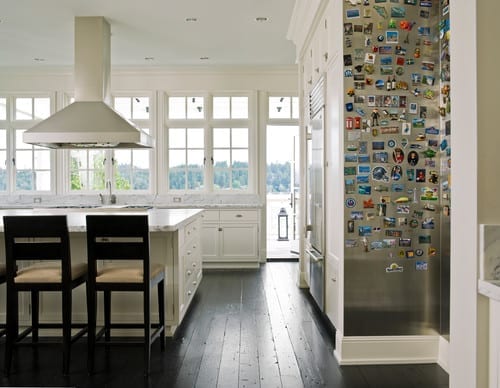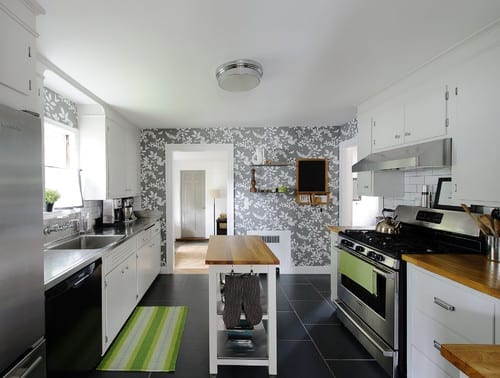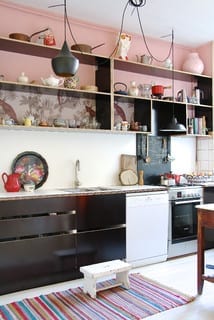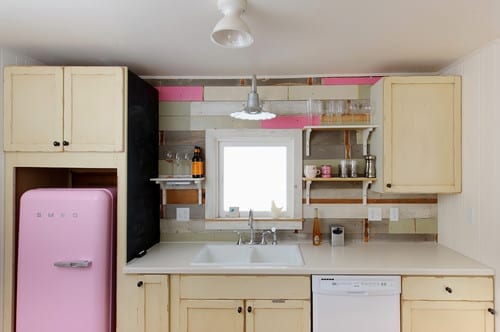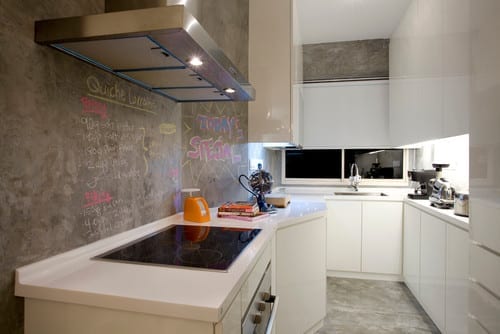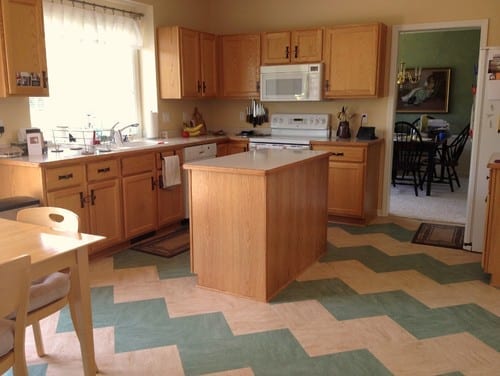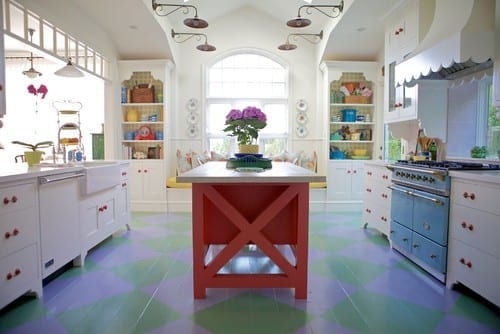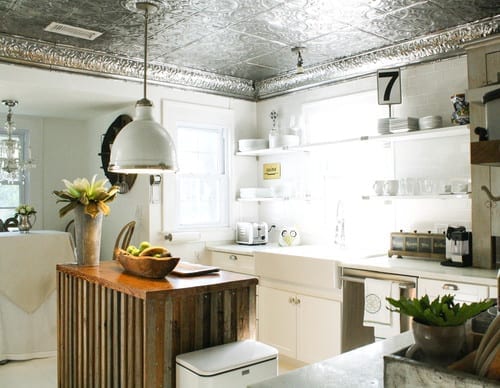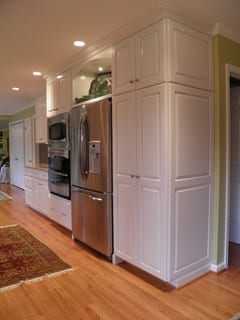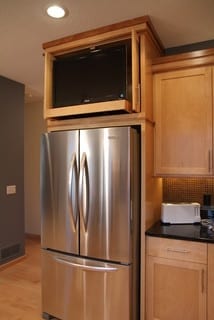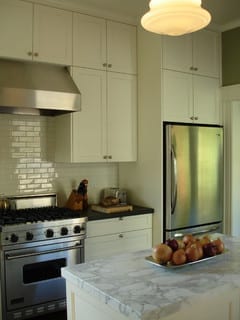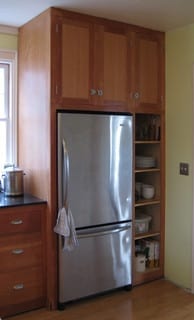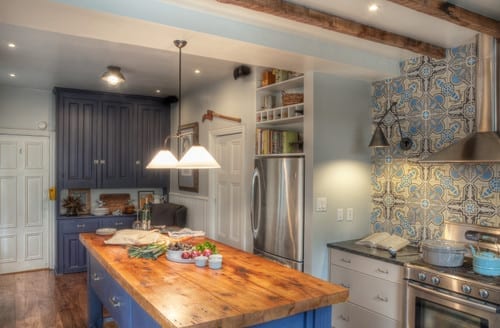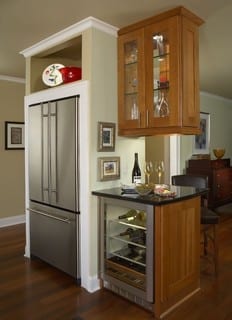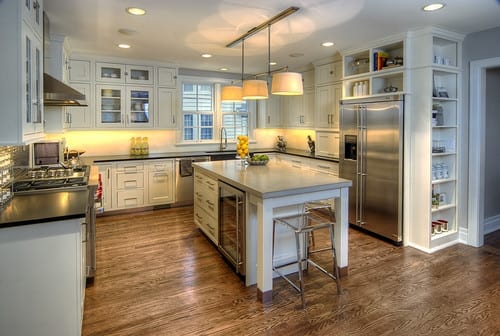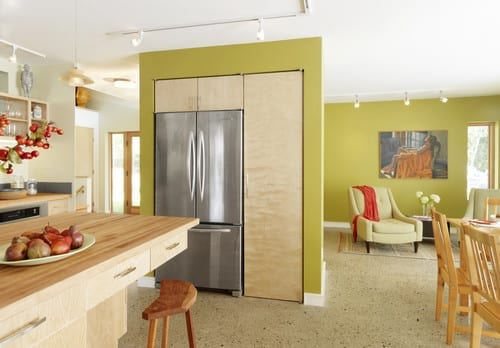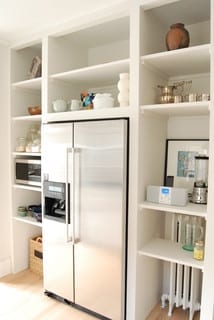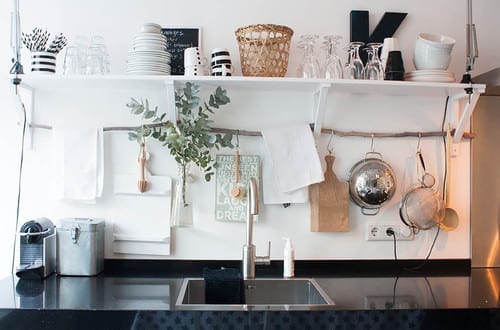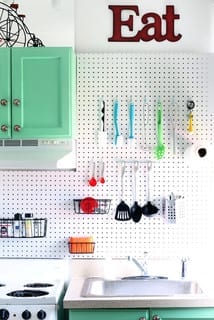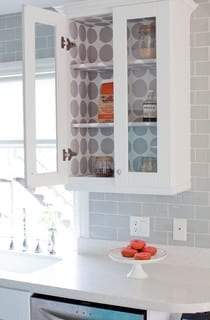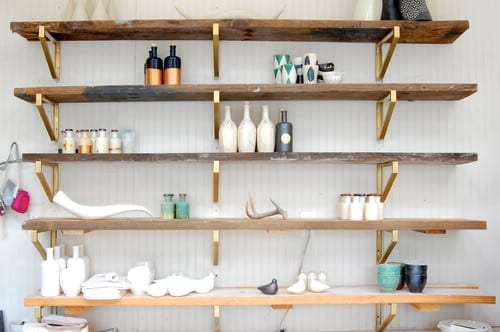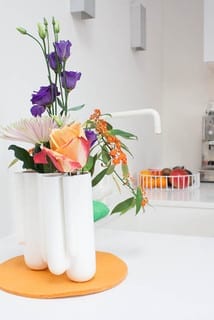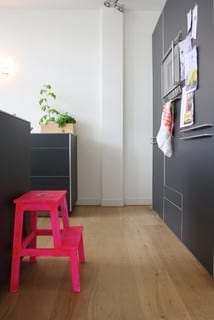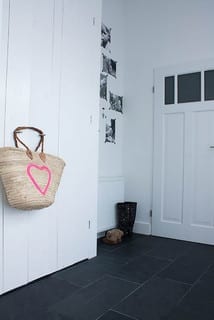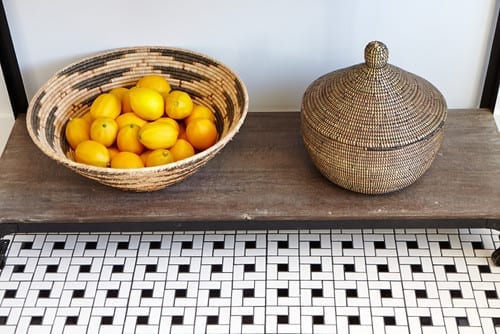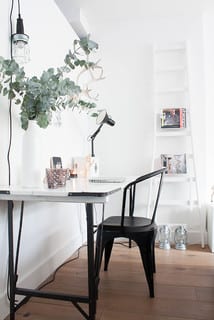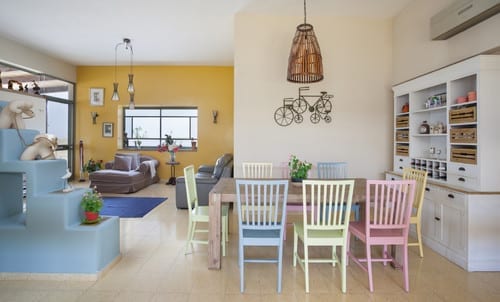Article by: Laura Gaskill
“Elegant” “sophisticated,” “simply beautiful” — are these words you would use to describe your dream kitchen? Even just adding a coat of paint, new lighting and carefully chosen decorative details can bring your current kitchen a bit closer to that dream. Here are 10 upgrades to consider.
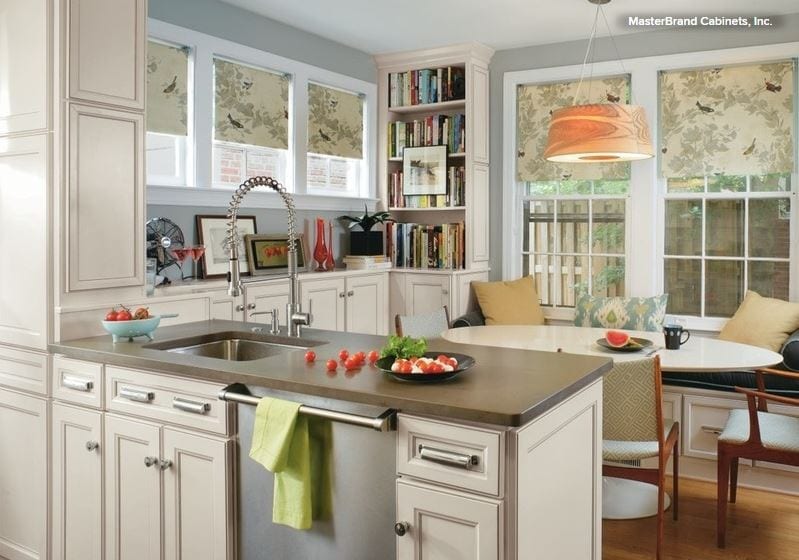
1. Roman shades. Covering the window with a classic Roman shade gives the kitchen a finished look. Go with a color and a pattern that coordinate with your cabinet and wall color, or stick with natural linen, which goes with everything.
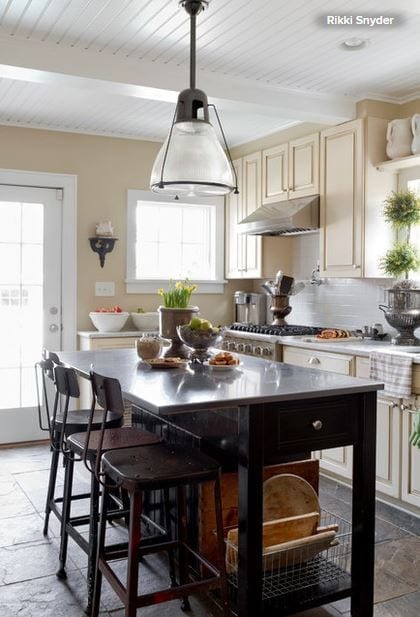
2. Topiary. A pair of topiaries flanking the sink is an elegant finishing touch. Use a vintage champagne bucket as a cachepot, or wrap a simple pot in burlap and tie on a velvet bow. If your kitchen gets a good amount of natural light, by all means get real plants — but if not, there’s no shame in picking up a couple of high-quality fakes.
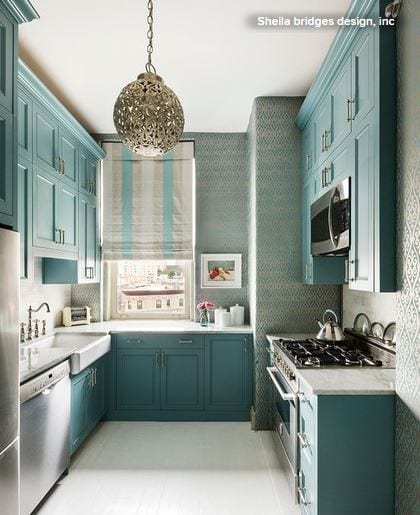
3. Pendant lighting. Swapping out a plain ceiling light fixture for something with more style can be done quickly — and your new pendant light can become the focal point of the room. Don’t be afraid to go big; even in a small kitchen like the one shown here, a sizable pendant looks striking, not overpowering.
4. A rich cabinet color. Whether you paint your cabinets or stain them a natural wood tone, a rich color is a high-impact, low cost way to change the look of your kitchen. Try a saturated hue like the blue-green shown here, or a chic gray or slate on just the lower cabinets.
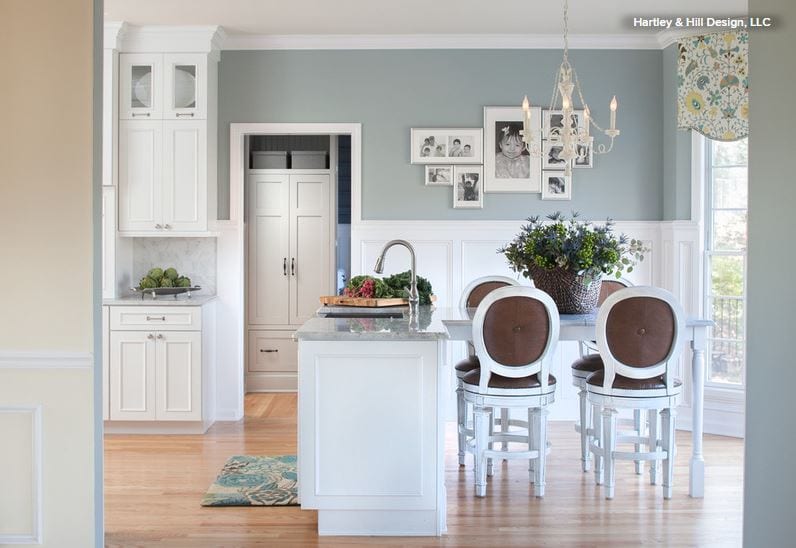
5. Wall paint. If you don’t want to repaint or restain your cabinets, another way to bring in color is by painting the walls. With all of the appliances and cabinetry, kitchen wall space is often fairly limited — which means not only is it quicker to paint, but the color is less likely to overwhelm than in, say, the living room. Try a smoky blue, rich “greige” or warm mocha.
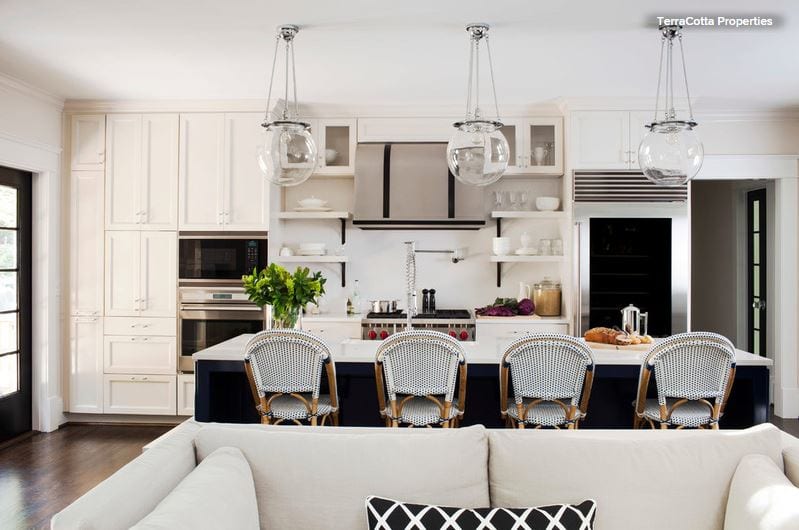
6. Upscale counter stools. There are so many options when it comes to kitchen counter seating that there’s no reason to stick with plain bar stools, unless you want to. Try classic bistro stools (like the ones shown here), sculptural wooden stools or sleek Lucite ones.
Also notice the pendant lights in this kitchen — if you have a long counter, placing a row of three large-scale pendant lights above is a great way to bring focus to the space. Glass pendants like the ones shown here are elegant and maximize light.
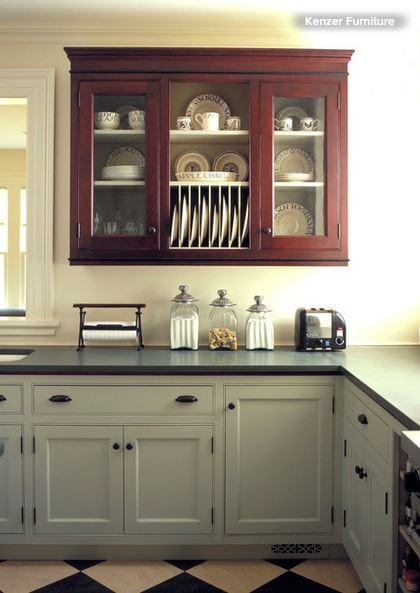
7. Glass cabinet fronts. Update old cabinets by having several of the doors replaced with glass fronts. This costs far less than replacing full cabinets and can completely change the look and feel of your kitchen. Remember, whatever is in the new glass-front cabinets will be visible at all times, so choose just a few cabinet fronts to replace and commit to keeping the interiors orderly.
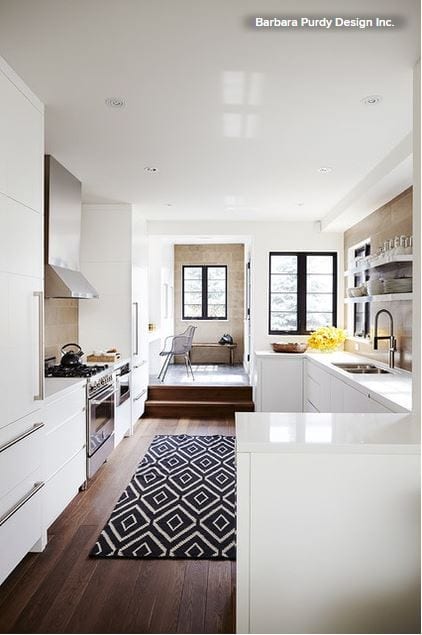
8. A chic rug. If you’ve shied away from using a rug in the kitchen for fear of spills and stains, try a chic indoor-outdoor version. These rugs come in beautiful colors and patterns now, and no one has to know about the stain-fighting powers.
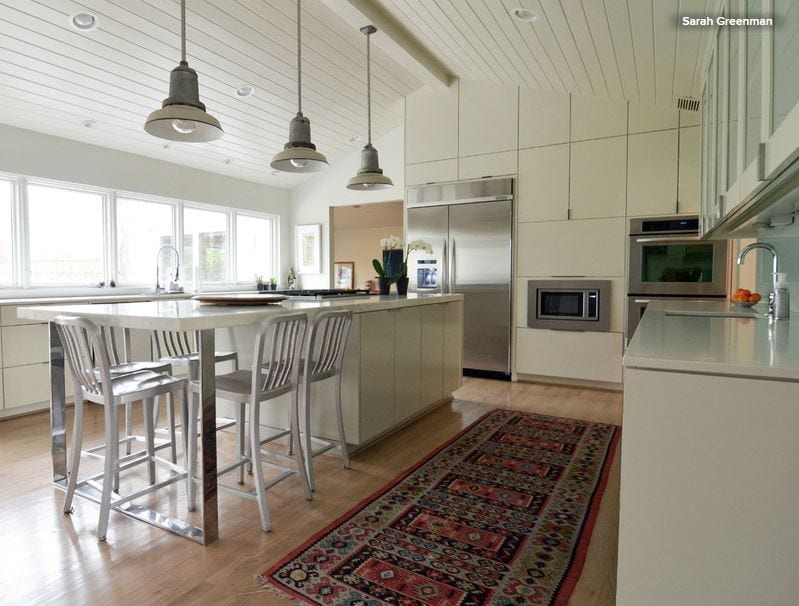
If you’re not frightened of spills, lay down a beautiful (but not priceless) Oriental carpet. Rugs made from wool and other natural materials are quite forgiving when it comes to stain removal, as long as you act promptly.
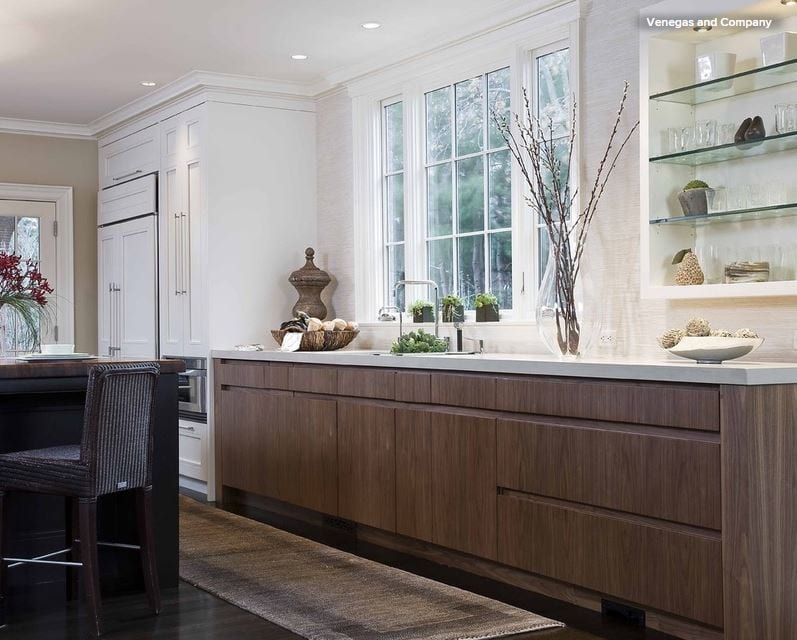
9. Branches in a tall vase. Branches last far longer than cut flowers — but more than that, they exude elegance. An armful of seasonal branches plunked in a tall vessel is an easy way to instantly boost the ambience in your kitchen.
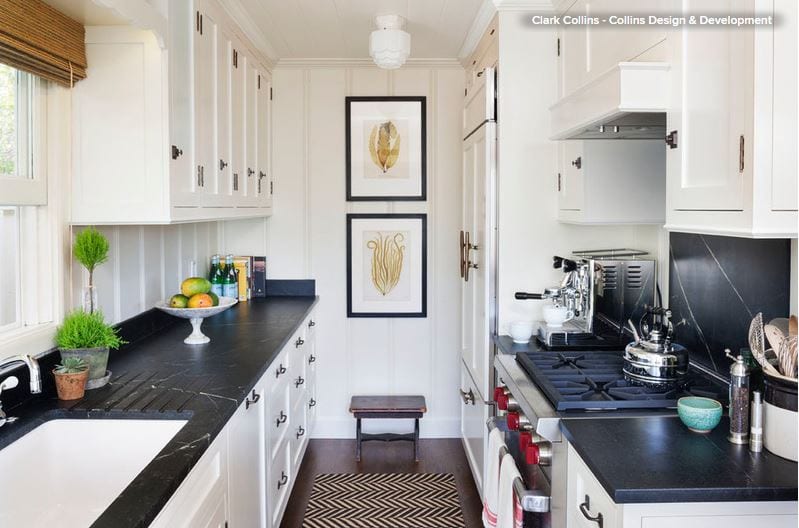
10. Decorative details. Framed artwork on the wall — and not just “kitchen” art but art you could just as easily hang in another room — can add polish to any kitchen.
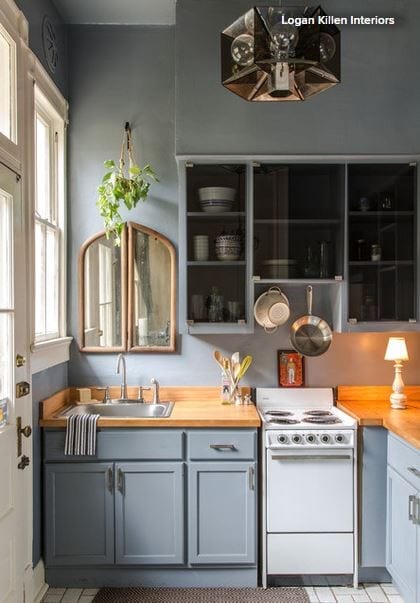
Mirrors are unexpected in the kitchen, and just like in other spaces, they can be a wonderful way to boost light. A small table lamp tucked onto the counter brings a warm glow that makes a kitchen feel more welcoming.
